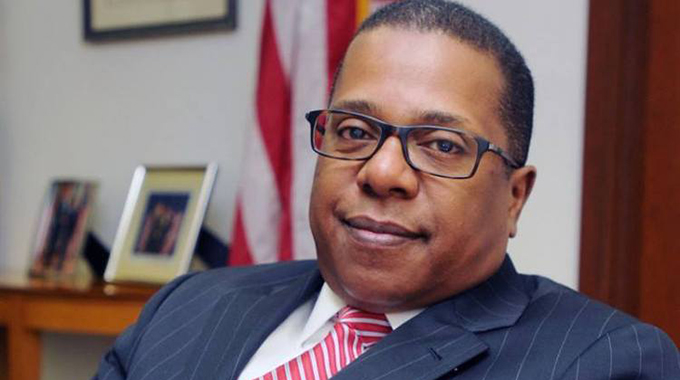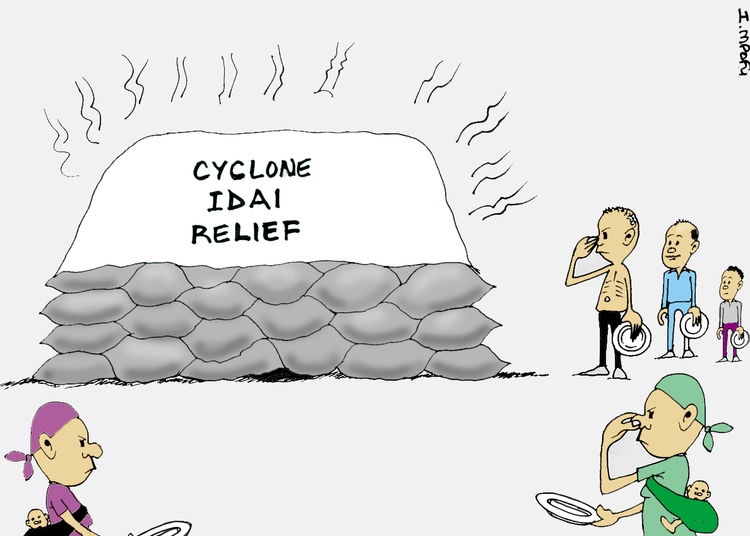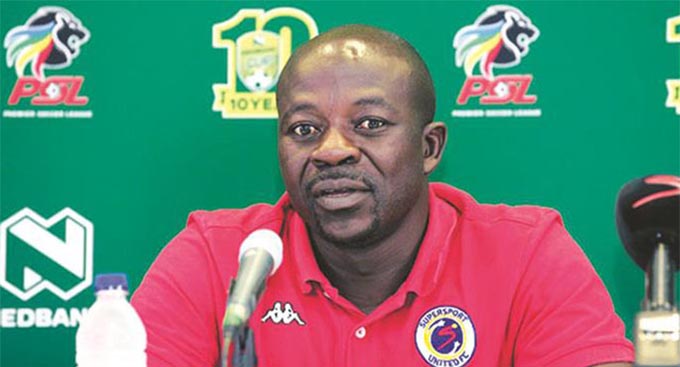Of human rights demands and regime change

Elijah Chihota Correspondent
Chapter 4 of Zimbabwe’s Constitution adopted in 2013 outlines various rights which are supposed to be enjoyed by Zimbabwean citizens as they go about their business. A few bad apples among us are busy abusing Section 59 which affords the “freedom to demonstrate and petition”. Of late, Zimbabweans have seen both the MDC and civil society organisations (CSOs) crying the loudest about alleged human rights abuses.
Two-pronged approach
After losing the 2018 Presidential election, MDC leader Nelson Chamisa started to use a two-pronged approach to discredit Government and the Presidency of President Emmerson Mnangagwa. These approaches are demonstrations and stage-managed abductions. The MDC is determined to use anything within their reach to tarnish the image of Government in the eyes of the international community in revenge for its own electoral rejection.
Alleged human rights abuses
What boggles the mind is that the issue of alleged human rights violations in Zimbabwe has all the signs of regime change written all over it. When CSOs start talking about human rights abuses, they end up calling for a change of Government. This alone shows that there is a third hand in that narrative which will be pushing them left, right and centre to make those baseless allegations.
Each time the MDC and its surrogates want to take to the streets, they are quick to point to Section 59. Those who are keen on demonstrating conveniently forget that Section 86 (1) of the same national charter states clearly: “The fundamental rights and freedoms set out in this chapter must be exercised reasonably and with due regard for the rights and freedoms of other persons.” Therefore, those who want to demonstrate should know that whatever they will be doing does not infringe on other people’s freedoms and rights.
ZIDERA
Since the turn of the 21st century, the United States of America has zoomed its regime change radar on Zimbabwe. When Zimbabwe reclaimed her agricultural land from a few white farmers and redistributed it to the majority of Zimbabweans, the US reacted harshly by imposing illegal sanctions under the banner of Zimbabwean Democracy and Economic Recovery Act (ZIDERA).
It should be noted that since the 1979 Lancaster House Agreement, Zimbabwe’s land issue has always been a bilateral matter between Zimbabwe and her colonial master, Britain. It, therefore, boggles the mind as to how and why the US took the lead in punishing Zimbabwe for reclaiming her land.
Fast forward to 2019, under US President Donald Trump’s administration, the antenna was raised again by putting Zimbabwe on the all-time spotlight. Buoyed by the opening of the US$200 million US embassy in Harare’s Bluff Hill suburb, in January 2019, the US went into overdrive aimed at crippling the Second Republic under the leadership of President Mnangagwa. Unlike previous US ambassadors to Zimbabwe, the incumbent, Brian Nichols, has not hidden his unbridled desire to unseat ZANU-PF and replace it with the MDC through using social media to spread lies. One such false claim is his recent tweet alleging that since January this year 50 people had been abducted in Zimbabwe.
Enter the Western embassies
When the news of the alleged abduction of acting president of the Zimbabwe Hospital Doctors’ Association (ZHDA), Dr Peter Magombeyi, emerged, they flooded social media with their messages.
“Since January more than 50 civil society, labour and opposition leaders have been abducted in Zimbabwe. No arrests have been made. We urge the Government to take action & hold perpetrators of these human rights violations accountable.#FindDrPeterMagombeyi”, tweeted the embassy.
The United Kingdom embassy also chipped in: “Concerned that there’s still no news on Dr Peter Magombeyi. We call upon the Government of Zimbabwe to do all it can to find him, as per yesterday’s court ruling #BringBackDrPeter.”
Not to be outdone, EU Ambassador to Zimbabwe, Timo Olkkonen, tweeted: “Praying for a speedy return of disappeared Dr Magombeyi.@DMagombeyi. The case needs to be swiftly and thoroughly investigated.”
The European Union in Zimbabwe has also jumped on to the bandwagon bent on effecting regime change in the country. It tweeted: “No one should fear to speak up, to demonstrate peacefully, and to go to vote. Democracy can only function if participation and trust between democratic state institutions, governments and citizens are guaranteed.”
It is these so-called rights which are used to topple governments.
Counter-surveillance
Pro-MDC social media group, @PacheduZW, went on to advise MDC members and supporters that “protest organisers ought to have a counter-intelligence unit that identifies and vets out possible infiltrators”.
This piece of advice alone coupled with information that the MDC runs safe houses on top of having an intelligence arm makes Government wary of the opposition’s endgame. If the party is operating like any other, is there need for an intelligence arm and having safe houses? Who would the occupants of the houses hiding from whom after doing what? This bears traces of “massive hand holding” by the US intelligence community.
Labour
Out of the blue, the Zimbabwe Congress of Trade Unions (ZCTU) and its affiliates are consolidating a detailed report which they intend to submit to the UN Special Rapporteur on the Right to Freedom of Peaceful Assembly and Association, Clément Nyaletsossi Voule. It is no secret that the ZCTU has since teamed up with the opposition, particularly the MDC, to inflict maximum damage to Government’s image by discrediting it.
Pre-planned vigils
On Monday night, the nation saw the first vigil night organised for Dr Magombeyi at Parirenyatwa Hospital. What happened during the vigil showed that this was a well- coordinated thing where even whites were seen participating. Most whites do not seek medical services from this hospital. What did they stand to benefit?
This clearly showed that someone picked out the impasse between medical doctors and Government over conditions of employment as a trigger to spark unrest. The ongoing vigils are being sponsored by those who have been pushing for regime change in the country since the mid- 1990s.
UN envoys
In all these stage-managed dramas, the United Nations special envoys are always ready to investigate but the good thing is the Zimbabwean administration has nothing to hide. In 2005 when Government decided to deal with the sprouting of illegal urban settlements in urban areas under the banner of Operation Restore Order, there was a Western backlash against Harare.
In June of 2005, the UN Secretary-General appointed a Tanzanian, Anna Kajimulo Tibaijuka, as his special envoy to study the impact of the operation in Zimbabwe. She assessed the situation for two weeks and wrote a damning report which was not reflective of the situation on the ground. Tibaijuka wrongfully concluded that “while purporting to target illegal dwellings and structures and to clamp down on alleged illicit activities, (the operation) was carried out in an indiscriminate and unjustified manner, with indifference to human suffering”.
This time around as President Mnangagwa is preparing for the 74th Session of the United Nations General Assembly, UN Special Rapporteur Voule is visiting Zimbabwe from September 17 to 27, 2019 to assess the country’s achievements and challenges in relation to the exercise of the rights to freedom of assembly and association in the country.
The timing of the visit leaves a lot to be desired. Of late, issues to do with human rights are being used as a trump card to punish Harare and deny the country lines of credit. This is calculated to perpetuate the ongoing economic challenges to force citizens to revolt against their Government, making it easy to effect regime change in Zimbabwe.










Comments